Welcome to the ultimate guide to kingfishers – your go-to resource for everything you need to know about these magnificent birds!
Whether you’re a bird enthusiast, a nature lover, or just curious about these colorful creatures, this comprehensive guide has got you covered.
In this post, we’ll take a look into the world of kingfishers and cover their fascinating features, behaviors, habitats, and more. So let’s dive in and discover the wonders of these beautiful birds together!
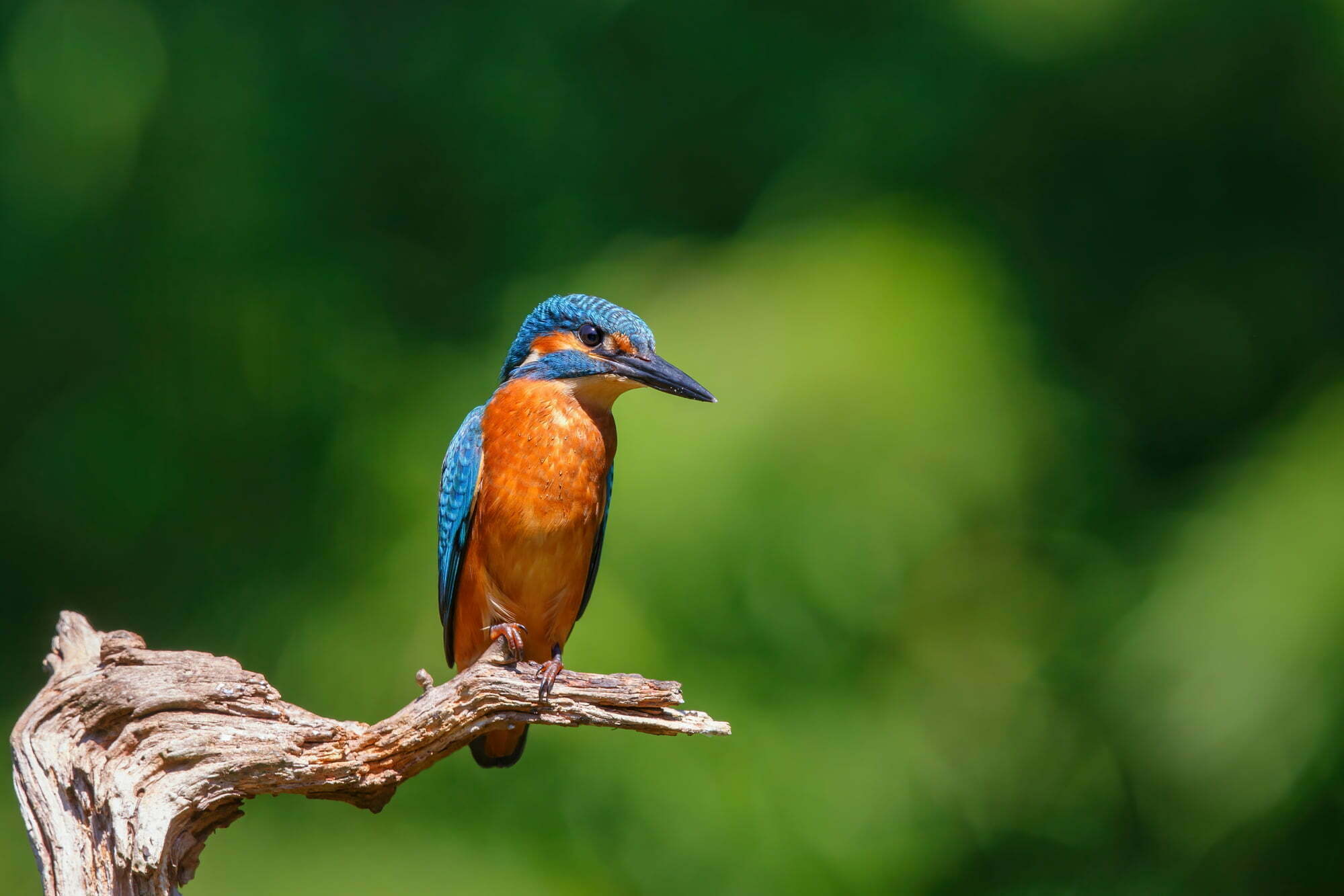
What Do Kingfishers Look Like?
Kingfishers are vibrant, medium-sized birds known for their striking appearance.
Plumage varies between species, but typically, you’ll find them with iridescent blue or green feathers on their backs and contrasting white or orange hues beneath.
Your observation of kingfishers will reveal a well-defined stout beak that’s often long, pointed, and perfect for fishing.
- Feathers: Glossy and sleek, providing waterproofing qualities.
- Beak: Strong and dagger-like, ranging in color from black to reddish-orange.
- Feet: Small and usually dark, not built for walking but rather for perching and holding prey.
An adult kingfisher’s length can range from 10 to 42 centimeters (4 to 16 inches), depending on the species, with a corresponding weight of 10 to 170 grams (0.35 to 6 ounces).
You’ll generally find that their wings are short but broad, suitable for rapid flight.
| Feature | Description |
|---|---|
| Colors | Bright blues, greens, and turquoise; vibrant oranges and whites. |
| Size | Petite; slightly larger than a sparrow, smaller than a pigeon. |
| Shape | Stocky with a large head and a short neck and tail. |
The bold colors you see in kingfishers serve as camouflage against the water and sky, aiding in their hunting technique.
When identifying these birds, look for the characteristic combination of their brilliant colors, robust beak, and compact physique; all elements that reflect their adaptation to aquatic environments.
Where Can You Find Kingfishers in The World?
Kingfishers are a diverse group of birds found across the world, with over 100 species populating various habitats.
They are particularly abundant in tropical regions of Asia and Africa, though they can also be found in Europe, including the UK, and some parts of North Africa.
Habitats: Kingfishers inhabit areas close to water bodies such as:
- Rivers
- Lakes
- Canals
- Marshes
Their presence in these ecosystems is pivotal as they primarily feed on aquatic prey.
Range:
- Asia: A stronghold for kingfishers, especially in the rainforests and mangroves.
- Europe: They are widespread, with the common kingfisher (Alcedo atthis) found along streams and rivers.
- UK: Common kingfishers are present throughout, often spotted along slow-moving rivers and canals.
- North Africa: Similar species to Europe, residing near water bodies.
Adaptations: Kingfishers have adapted well to their environments, sporting large heads, long, sharp bills, and vibrant plumage which aids in camouflage among the foliage and water.
What Do Kingfishers Eat?
Kingfishers are known for their diverse and carnivorous diet. You’ll often find that their primary food source includes a variety of freshwater fish, which they hunt with remarkable precision. In their quest for nourishment, minnows often become a staple in their diet.
In addition to fish, kingfishers also consume a wide array of aquatic invertebrates. For instance, they are adept at capturing shrimp and dragonfly nymphs. These creatures provide crucial nutrients, helping kingfishers maintain their energy levels.
Your curiosity might extend towards what happens beyond the water’s edge. Here, kingfishers will snack on frogs and other available invertebrates. The birds exploit every opportunity to feed, making the most of the environment around them.
Here’s a breakdown of a kingfisher’s typical diet menu:
- Fish: Minnows, sticklebacks, small roach
- Aquatic Invertebrates: Shrimp, dragonfly nymphs, small crustaceans
- Invertebrates on Land: Worms, beetles, and other small insects
- Amphibians: Frogs and tadpoles, when available
Kingfishers rely on their keen eyesight and swift flight to dive and catch their prey. They are expert hunters, maneuvering through both air and water with agility.
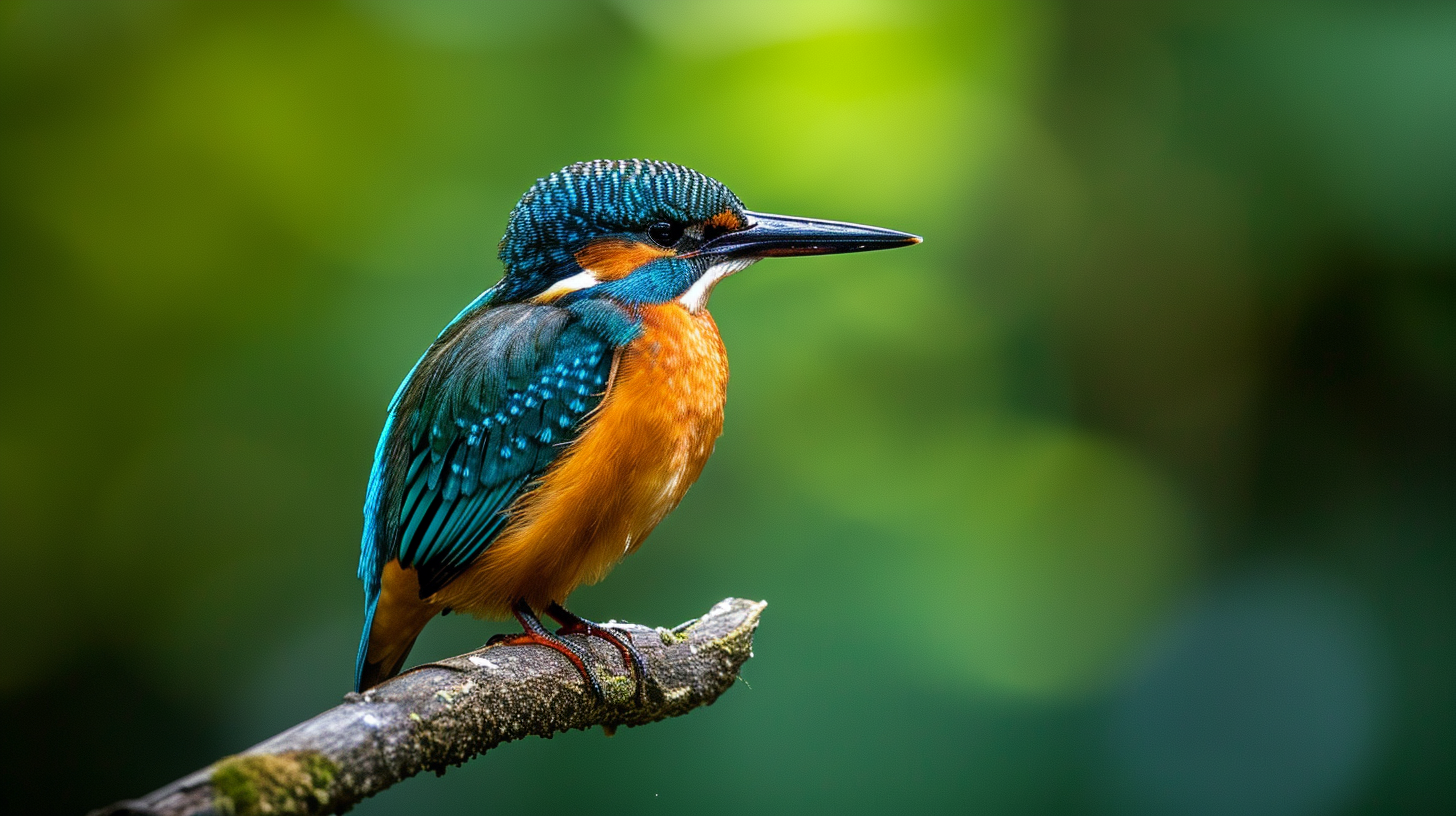
How Do Kingfishers Catch Their Prey?
Kingfishers are skilled hunters, primarily consuming a diet of fish but also eating crustaceans, insects, and small amphibians. Your understanding of their hunting techniques can enhance your appreciation of these colorful birds.
When kingfishers hunt, they begin by perching on a suitable spot over water. This perch acts as a lookout point, allowing them to spot potential prey.
Their hunting perches are typically solitary branches or reeds that provide a clear view of their hunting grounds.
Upon spotting prey, kingfishers perform a precision dive; they fold their wings and dive into the water, beak-first. The bill of a kingfisher is exceptionally sharp and strong, evolved to help them catch and grip slippery fish.
When the kingfisher hits the water, their eyes are protected by a special transparent membrane that allows them to see underwater.
After catching a fish, kingfishers return to their perch. Here, they will often beat their prey against the perch to kill it before swallowing it headfirst.
The shape and strength of their beak are perfect for this purpose, ensuring that they can dispatch their prey quickly and effectively.
Diving is not the sole method; some species also hover above water to spot fish before plunging in. This is a more energy-intensive method but showcases their agility and ability to spot prey from above.
Here’s a brief overview of their hunting strategy:
- Locate: Select a high vantage point.
- Spot: Use keen vision to identify prey.
- Dive: Execute a targeted dive towards the prey.
- Catch: Capture fish with a strong, sharp bill.
- Return: Fly back to the perch with the catch.
- Subdue: Kill the prey if needed by striking it against the perch.
- Consume: Swallow the prey, usually headfirst.
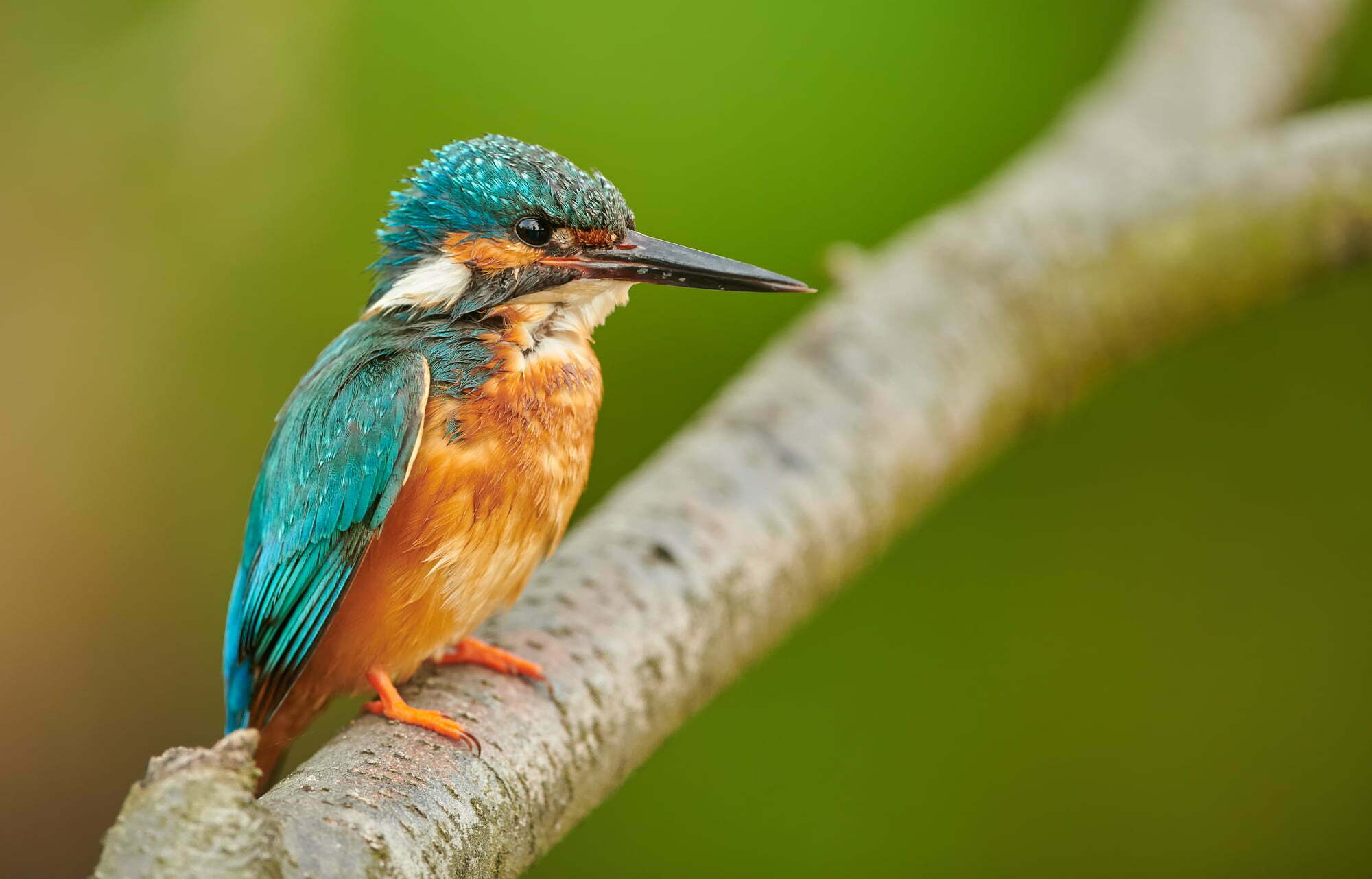
What Is the Lifespan of A Kingfisher?
The lifespan of a kingfisher can vary depending on the species and environmental factors. Typically, your kingfisher can expect to live between 6 to 10 years in the wild.
- Average Lifespan in Wild: 6-10 years
- In Captivity: May live slightly longer due to controlled conditions
Becoming an adult, a kingfisher is ready to breed from the age of one year. During their lifetime, kingfishers will produce several broods, with the breeding season usually yielding two broods per year.
| Age | Stage | Notes |
|---|---|---|
| 0-3 weeks | Nestling | Dependent on parents for food and protection. |
| 3-4 weeks | Fledgling | Begins to leave the nest and learn to fly. |
| >1 year | Adult | Capable of reproduction and independent survival. |
In their natural habitat, adult kingfishers face various threats that can impact their lifespan, such as predators, disease, and habitat loss.
On the brighter side, if they manage to survive the vulnerable early stages of life, these adults can thrive and contribute to the population by producing offspring over several years.
It is essential for the conservation of kingfishers to maintain their habitats and protect them from the risks posed by human activity.
Do Kingfishers Come out In the Rain?
Kingfishers are generally weather-resilient birds and can often be seen actively pursuing their prey even during light rain.
When it rains, their behavior might slightly change, and they could become less active or choose to take shelter. However, their need to feed, which is predominantly on fish, makes them less deterred by wet conditions.
During rain, you’ll notice that kingfishers might use their bill more efficiently. With excellent vision and a precision-honed bill, they continue to dive and catch their prey despite the disturbances caused by raindrops on the water’s surface.
Here are some factors affecting kingfisher activity in the rain:
- Light Rain:
- Kingfishers stay active.
- Feeding continues as usual.
- Heavy Rain:
- Activity levels may decrease.
- May seek shelter intermittently.
Despite their resilience, prolonged and heavy rain can impact kingfishers, especially in terms of their feeding patterns since extreme weather can make fish less accessible.
Kingfishers are equipped with special adaptations:
- Waterproof feathers that keep them dry and buoyant.
- Oil from a gland at the base of their tail, which they spread over their feathers to enhance waterproofing.
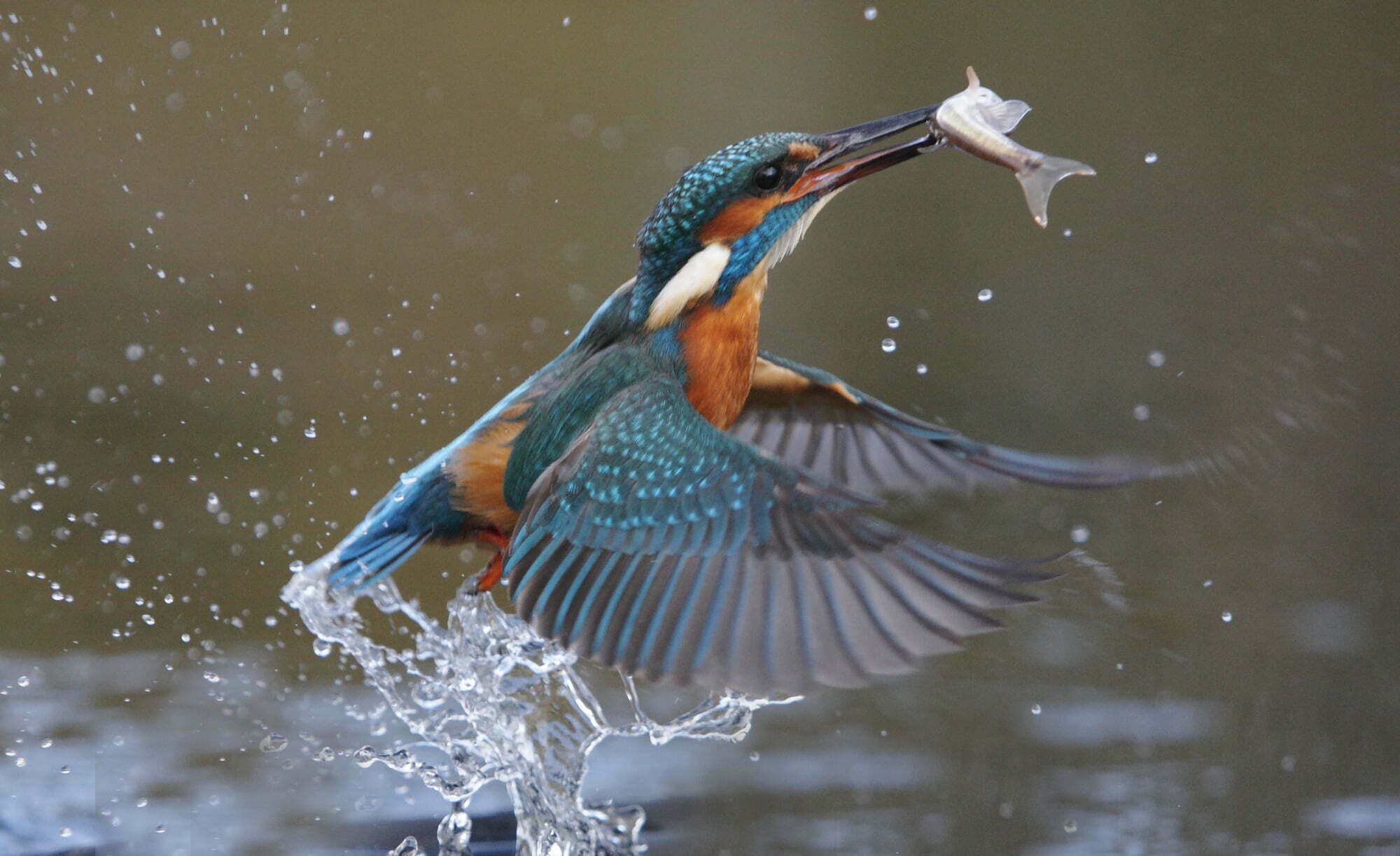
Why Are Kingfishers at Risk?
Kingfishers, with their vibrant plumage and skillful hunting techniques, are among the most iconic species of birds. Yet, numerous factors contribute to their declining numbers, making them vulnerable to the threat of extinction.
Habitat Loss: The most significant danger you’ll find to kingfishers is the loss of their natural habitats. As wetlands and riverbanks are altered or demolished for human activities such as agriculture, urban development, and mining, kingfishers lose crucial nesting and feeding sites.
- Deforestation: Removal of trees affects the availability of perches and nesting cavities.
- Water Pollution: Contaminated water bodies reduce fish populations, their primary food source.
Climate Change: Climate fluctuations cause unpredictable weather patterns. Harsh winters with extended freezes can decimate local fish populations, leaving kingfishers without food.
- Droughts: Low water levels during dry spells can impact fish availability.
- Flooding: Sudden floods can destroy nests and displace local populations.
Predation: Kingfishers also face predation risks, which can be intensified by human activities.
- Domestic Cats: In some areas, predation by domestic cats is a significant threat.
- Raptors: Larger birds of prey may target kingfishers, especially in areas where their natural cover has been reduced.
How Does the Kingfisher Adapt to Different Environments Around the World?
Kingfishers exhibit remarkable adaptations that enable them to thrive across various environments. Your understanding of these birds will deepen by examining their diverse distribution and the corresponding adaptive traits.
Distribution and Habitat
Kingfishers are found globally, with species inhabiting woodlands, tropical rainforests, deserts, and regions close to water bodies. Each habitat presents unique challenges, from finding food to nesting.
Morphological Adaptations
Physical characteristics like robust bodies and large heads facilitate rapid diving and swift flight, essential for capturing prey. Their beak shape and size vary among species, reflecting the type of diet and hunting strategy employed in different environments.
Behavioural Adaptations
In terms of behavior, kingfishers show shy and elusive tendencies, often solitary except during the breeding season. They’re highly territorial, using specific calls and flight displays to communicate.
Breeding Adaptations
Nesting habits are shaped by their surroundings. River kingfishers excavate burrows in riverbanks, while forest dwellers may use termite nests or tree holes. Breeding populations are maintained through these specialized nesting behaviors, ensuring offspring survival in harsh environments.
Diet and Feeding
Kingfishers adapt their diet to the available food sources. For instance, fish is predominant in aquatic environments, while invertebrates and small mammals are consumed elsewhere. The ability to switch diets is crucial for their survival across various terrains.
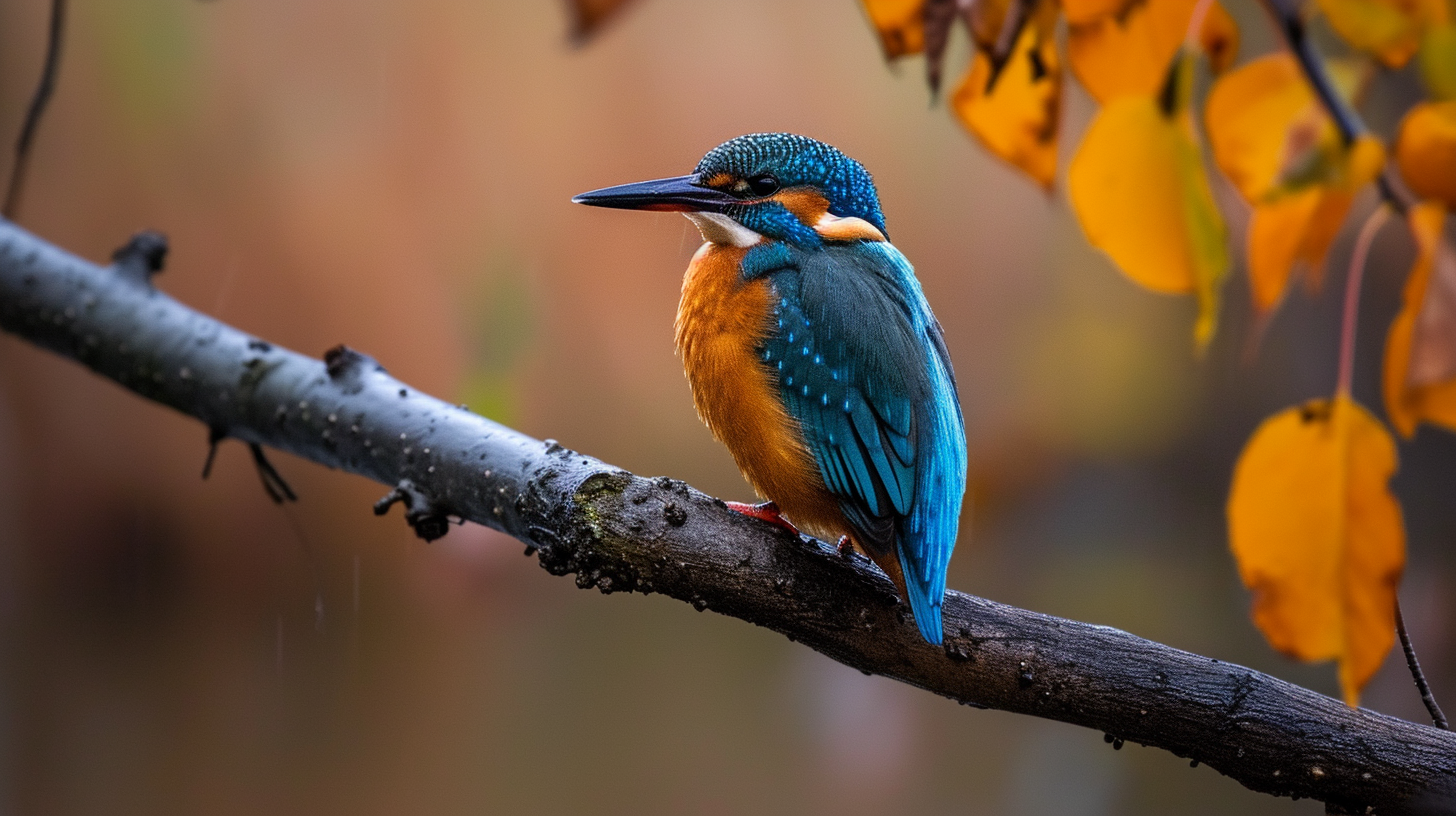
What Kind of Nesting Habits Do Kingfishers Have?
Kingfishers are known for their distinctive nesting habits. Most species prefer to nest in burrows that they excavate themselves, often in the steep riverbanks.
These burrows not only provide protection from predators and inclement weather but also offer a safe environment for raising their chicks.
During the breeding season, which varies among species and locations, your observation of kingfishers might increase as they become more active in their nesting areas.
Females usually lay a clutch of eggs, ranging from three to six, and these are incubated by both parents.
Once hatched, chicks require significant care and feeding by both parents, which often take turns hunting and guarding the nest.
It can be fascinating to note that the chicks do not leave the burrow until they are fully fledged, capable of flying and fishing for themselves.
| Nesting Cycle Stage | Breeding Season Actions |
|---|---|
| 1. Burrow Excavation | Selecting and digging a burrow in a suitable riverbank |
| 2. Egg Laying | Laying the eggs; typically one a day until the clutch is complete |
| 3. Incubation | Both parents incubating the eggs, which lasts about 3-4 weeks |
| 4. Chick Rearing | Feeding and protecting the chicks until they fledge |
Do Kingfishers Migrate?
Kingfishers are a diverse group of birds, and their migratory patterns can vary significantly across different species. Your understanding of their migration habits is vital to comprehending their survival strategies and population distributions.
Migration Patterns: Most kingfisher species are sedentary, meaning they do not migrate and stay within the same area year-round. However, some populations do migrate seasonally. These migrations can be triggered by changes in weather conditions and food availability.
Partial Migrants: A few species show partial migration where only some of the population travels, often depending on the latitude of their habitat. The migratory behavior can also be influenced by age and sex within the population.
- Belted Kingfisher: In North America, these birds may migrate from the northern parts of their range to the south during winter.
Migration Range: The distance of migration among the migratory kingfishers varies:
- Short-Distance Migrants: Some travel only short distances to find unfrozen water or more abundant prey.
- Long-Distance Migrants: Few species undertake long journeys, for example, the river kingfishers which may migrate between Europe and Africa across the Mediterranean.
Non-Migratory Species: Many kingfishers live in tropical areas where the climate is stable, making migration unnecessary. They have adapted to exploit local resources all year round and maintain territorial boundaries.
Conservation Implications: Understanding migratory patterns helps in conservation efforts, as it’s crucial to protect habitats both at breeding grounds and migration stops. Key threats include habitat loss and climate change, which can disrupt traditional migration routes.
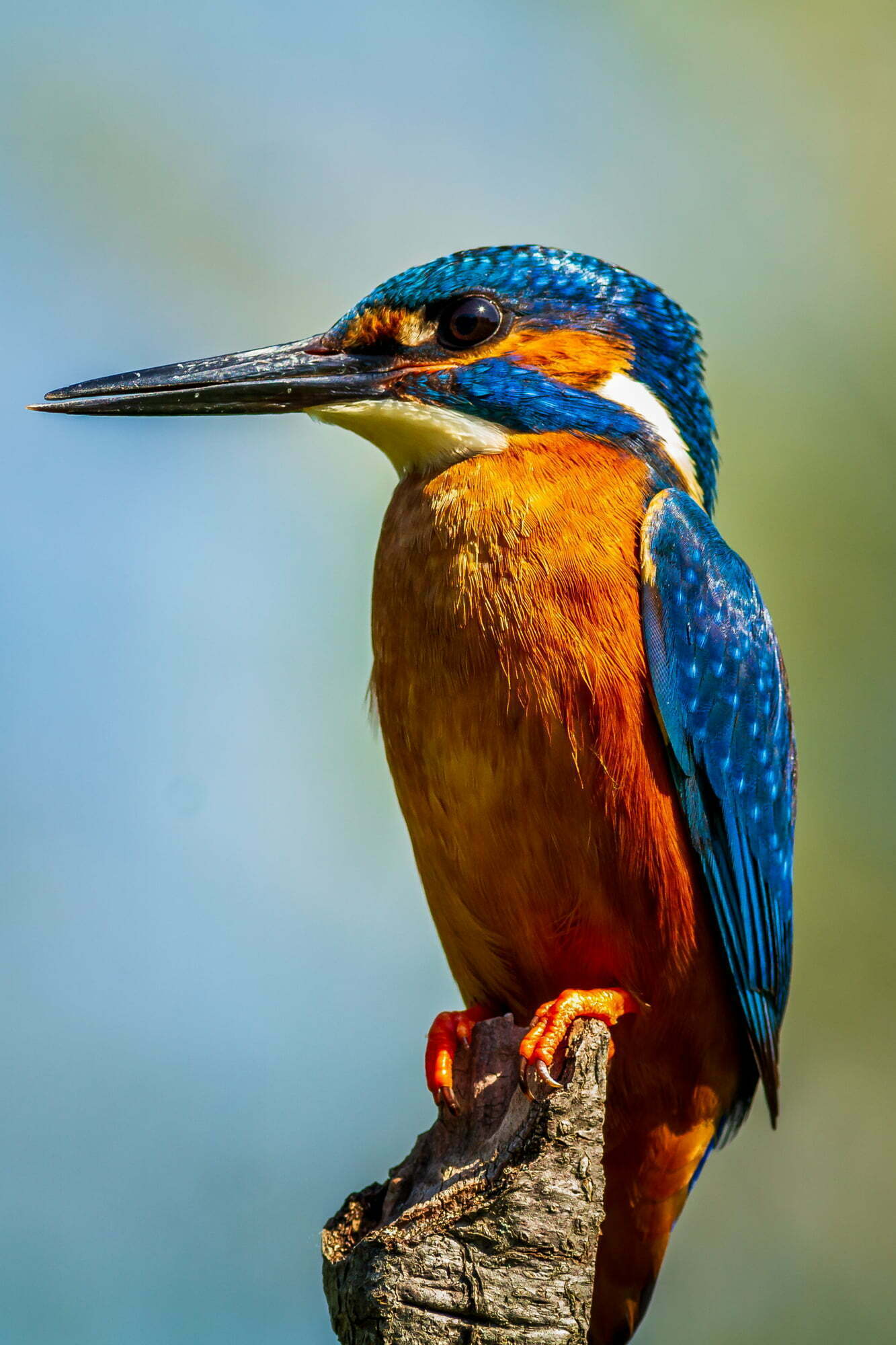
What Are Some of The Predators of Kingfishers?
Kingfishers are vibrant and skilled hunters, but they face threats from a variety of predators across their range. Understanding these risks is crucial for their protection.
Birds of Prey: Raptors such as hawks, eagles, and falcons pose a significant threat to kingfishers. These predators are proficient hunters, capable of snatching kingfishers from the air or from their perches.
| Location | Birds of Prey | Threat Level |
|---|---|---|
| Europe | Sparrowhawks | High |
| America | Bald Eagles | Medium |
| Asia | Peregrine Falcons | Medium |
Mammals: Various mammalian species, especially those adept at climbing, can raid kingfisher nests. Watch out for:
- Cats (both domestic and feral)
- Stoats
- Weasels
These mammals may predate on eggs or young kingfishers, affecting species’ fledgling survival rates.
Reptiles: In tropical regions, snakes pose a risk to kingfishers. They can navigate the tight spaces of nesting sites to consume eggs or the young.
Humans: Indirectly, humans are also predators due to habitat destruction and pollution. While they do not consume kingfishers, their actions can lead to increased vulnerability.
What Are Some Fun Facts About Kingfishers?
Now that you know everything there is to know about kingfishers, here are a few fun facts to top it all off!
- Kingfishers are one of the oldest bird families in the world. They first appeared on Earth over 30 million years ago.
- The largest kingfisher in the world is the giant kingfisher, which can be found in Africa. The smallest kingfisher in the world is the elfin woods warbler, which can be found in North America.
- Kingfishers are not always good swimmers. In fact, some species of kingfishers don’t even like to get wet!
- Kingfishers are known for their beautiful plumage. The colors of their feathers can range from blue to green to red.
- The kingfisher is the national bird of Zambia.
What Kind of Nesting Behavior Do Kingfishers Exhibit?
Kingfishers showcase unique nesting habits distinct to their species. They typically favor natural or excavated burrows along riverbanks or sandbanks for their nests.
These burrows, tunnel-like in structure, provide safety from predators and stability for egg incubation.
Your observation of their nesting behavior will reveal that kingfishers do not gather traditional nest materials. Instead, they rely on the safety of their burrows, which they dig using their sturdy bills.
These burrows can be up to a meter long, with a chamber at the end for laying eggs.
The breeding pair works together in the excavation process. Here’s what you typically may find during the breeding season:
- Mates: Kingfishers are usually monogamous during a breeding season, with both mates participating in nesting duties.
- Nesting Period: Depending on the species, the nesting period can begin as early as spring and extend into the summer.
- Eggs: A female kingfisher lays a clutch of eggs, typically ranging from 5 to 7 eggs.
- Incubation: Both parents share the responsibility of incubating the eggs, which usually lasts about 3 to 4 weeks.
- Chicks: Once hatched, kingfisher chicks are blind and featherless and rely entirely on their parents for food and protection.
Breeding Behavior in Different Species
Differences in nesting and breeding behavior can be observed across various kingfisher species. Here’s a brief overview:
| Species | Nest Type | Clutch Size | Parental Roles |
|---|---|---|---|
| Common Kingfisher | Riverbank burrow | 6-7 eggs | Both parents |
| Pied Kingfisher | Sandbank burrow | 3-4 eggs | Males assist |
| Amazon Kingfisher | Ground burrow | 3-4 eggs | Both incubate |
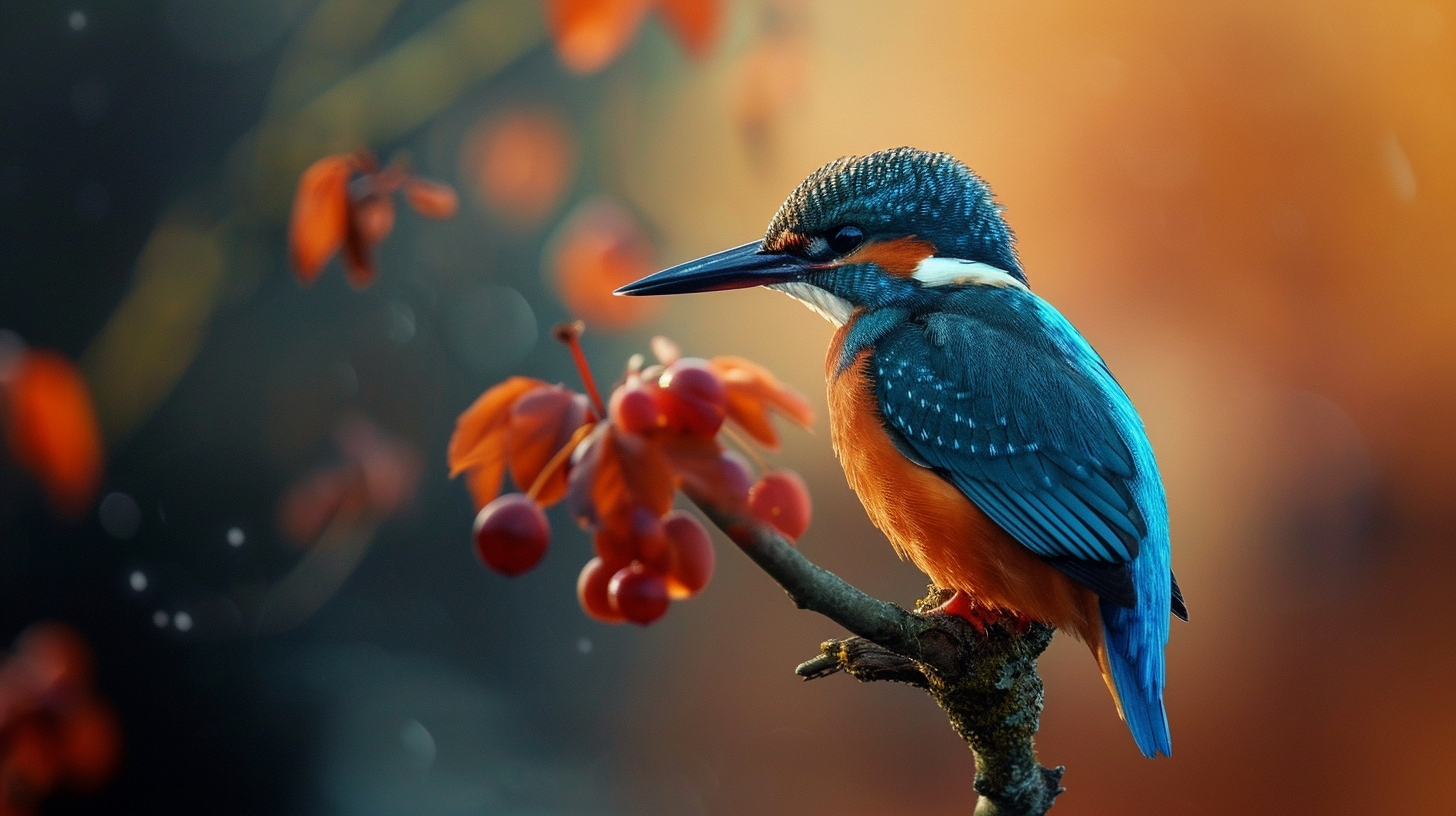
How to Attract Kingfishers?
To attract kingfishers to your area, start by enhancing their natural habitat. Focus on the following strategies:
Provide Natural Food Sources: Kingfishers primarily feed on fish and aquatic invertebrates. Facilitate these food sources by ensuring a healthy riverine environment.
- Stock ponds with small fish.
- Avoid using pesticides that could harm their food supply.
Create Suitable Nesting Sites: These birds prefer vertical earth banks near water bodies for nesting.
- Maintain natural riverbanks.
- Install artificial nesting banks if natural ones are not available.
Establish Perching Spots: Perches allow kingfishers to hunt efficiently.
- Set up tall perches overlooking water.
- Ensure the perches are stable and offer a clear view.
Encourage Rich Vegetation: Dense vegetation near water bodies offers kingfishers shelter and nesting materials.
- Plant native shrubs and trees along riverbanks.
- Maintain a buffer of vegetation to protect their habitat from disturbance.
Improve Water Quality: A clean water environment supports the kingfisher’s prey.
- Engage in regular clean-up of rivers.
- Support initiatives aimed at preserving water quality.
Remember, your efforts to create a conducive environment for kingfishers not only benefits these vibrant birds but also enhances the entire ecosystem around your waterways.
How Deep Do Kingfishers Dive?
When you observe kingfishers, their dive depth varies among species, yet these birds are recognized for their remarkable diving abilities.
Typically, your common kingfisher (Alcedo atthis) will dive between 1 to 2 meters (3 to 6 feet). However, the specific depth depends on factors such as the clarity of the water and the location of their prey.
Diving Mechanics:
- Initiation: Kingfishers begin their dive from a perch with a clear view.
- Entry: They enter the water with pinpoint accuracy.
- Pursuit: Once submerged, they propel with powerful wing beats.
The depth of each dive is directly related to where their prey is situated. When fishing, kingfishers adjust their dive depth to reach their target; this could be just below the water’s surface or at the bottom of the riverbed, within their typical diving range.
Prey Considerations:
- Visibility: The clearer the water, the deeper a kingfisher may spot and subsequently dive for prey.
- Type of Prey: Smaller fish or aquatic insects may be caught nearer the surface, while larger prey may require a deeper plunge.
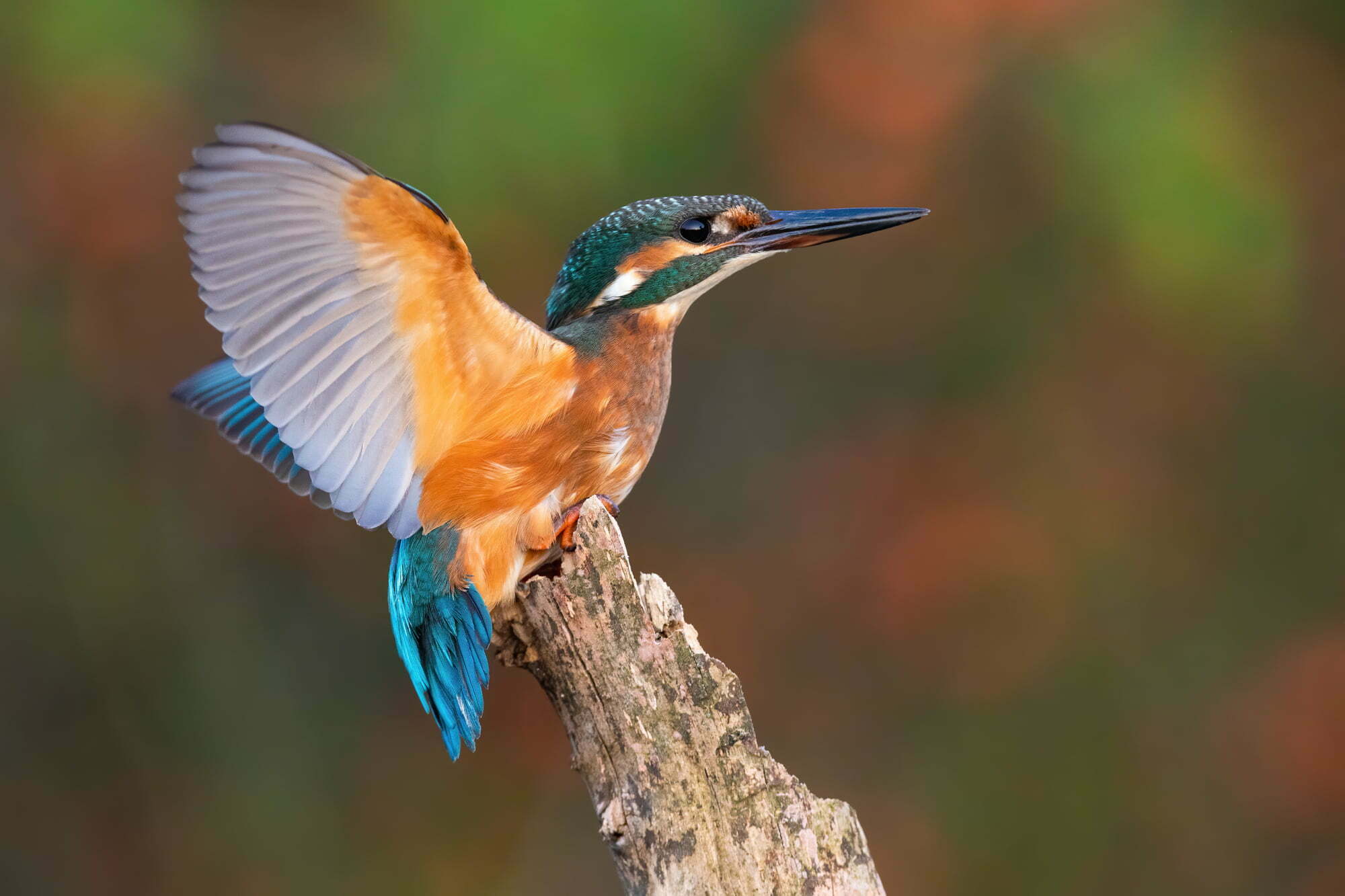
How to Photograph Kingfishers Diving?
Photographing kingfishers while they dive is an exhilarating task, requiring patience and precision. To increase your chances of capturing a stunning shot, follow these tips:
Spotting Tips:
- Location: Scout for habitats frequented by kingfishers such as rivers, lakes, and streams. Look for perching branches that kingfishers may use before diving.
- Timing: Early morning or late afternoon offers the best light for photography. Kingfishers are also more active during these hours.
Camera Settings:
- Shutter Speed: Use a fast shutter speed, at least 1/2000th of a second, to freeze the quick movement.
- Aperture: A wide aperture (low f-number) helps to achieve a faster shutter speed and focuses on the bird.
- ISO: Keep as low as possible to avoid noise, but don’t be afraid to increase it if you need a faster shutter speed.
- Focus Mode: Set your camera to continuous autofocus (AF-C) to track the fast-moving bird.
Photographing the Dive:
- Observe the kingfisher’s behavior to anticipate when it may dive.
- Pre-focus on the area where you expect the dive to occur.
- Remain steady and be ready to capture multiple shots as the kingfisher dives.
Remember:
- Use a tripod or monopod for stability.
- Employ burst mode to take several shots per second.
- Stay discreet and avoid disturbing the birds.
